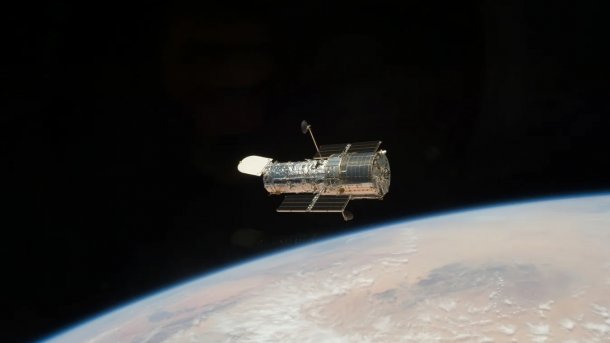The gyroscope again: Hubble Space Telescope back in operation after inactivity
The Hubble Space Telescope was out of action again for almost a week because a gyroscope reported faulty values. Not for the first time.

(Bild: NASA)
The Hubble Space Telescope has ended another forced break and resumed operations six days after it automatically shut itself down in safety mode. The US space agency has now announced this and assured that the instrument is in good overall condition. NASA also adds that the space telescope continues to use all three gyroscopes to determine its orientation. One of them had repeatedly delivered incorrect values, causing the most recent operational pause. All the device's scientific instruments are now back in use and scientific data is being collected again, NASA writes.
Recurring problems
NASA made it public at the end of last week that the space telescope had stopped operating again. The instrument had already switched to safety mode on April 23. According to NASA, the faulty values that triggered this came from the same gyroscope that caused Hubble to fail for several weeks in mid-November. Those responsible at NASA are nevertheless looking for a solution and do not want to do without the component for now. However, if the faults cannot be rectified, the Hubble Space Telescope can also be operated with a single gyroscope if necessary. This would then take over the fine alignment after it has been roughly aligned elsewhere.
Hubble was launched into space on the Discovery space shuttle in 1990. Right from the start, it became clear that the instrument's 2.4-meter primary mirror was so faulty that it did not provide much better image quality than ground-based telescopes. A repair mission with the Space Shuttle Endeavour followed in 1993, followed by four more maintenance missions until 2009. During the last one, six new gyroscopes were installed to align the instrument precisely with research objects. Three of them have since failed, but the rest are still working. In recent years, the technical problems of the revolutionary instrument have become more frequent and have made it clear how decrepit the technology has become.
(mho)